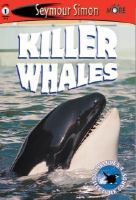1. BIBLIOGRAPHY
Anderson, Laurie Halse. 1999. SPEAK. New York
2. PLOT SUMMARY
Melinda must begin high school without a single friend in the world. After calling the cops during an end of summer party, not only will no one talk to Melinda, they go out of their way to call her names, pull her hair and do other cruel things. But what if they really knew what happened that night? What if she told someone, anyone what the most popular senior boy, Andy Evans did to her that night of the party? Would they listen? Her art teacher, Mr. Freeman is the only person that realizes there is more to Melinda than her crusty, chewed lips, dirty hair and baggy clothes. Everyone else, including her parents, is tired of her skipping classes, failing grades and not speaking. Just as her year long art project, Melinda’s life seems hopeless until, with a little help, she realizes it can be brought back to life.
3. CRITITAL ANALYSIS
Told through first-person narration, the main character Melinda walks the reader through her thoughts and feelings as her life is crashing all around her. By incorporating a lot of symbolism such as “IT found me again. I thought I could ignore IT.” and “Roots knob out of the ground and the crown reaches for the sun, tall and healthy. The new growth is the best part.”, Anderson Anderson Anderson
4. REVIEW EXCERPT(S)
2000 Printz Honor Book
1999 National Book Award Finalist
Edgar Allan Poe Award Finalist
1999 Los Angeles Times Book Prize Finalist
Winner of the SCBWI Golden Kite Award
ALA Best Book for Young Adults
ALA Quick Pick
Publishers Weekly Best Book of the Year
Booklist Top Ten First Novel of 1999
BCCB Blue Ribbon Book
School Library Journal Best Book of the Year
Horn Book Fanfare Title
1999 National Book Award Finalist
Edgar Allan Poe Award Finalist
1999 Los Angeles Times Book Prize Finalist
Winner of the SCBWI Golden Kite Award
Publishers Weekly Best Book of the Year
Booklist Top Ten First Novel of 1999
BCCB Blue Ribbon Book
School Library Journal Best Book of the Year
Horn Book Fanfare Title
SCHOOL LIBRARY JOURNAL review: “Anderson
BOOKLIST review: “In her YA fiction debut, Anderson
KIRKUS review: “The plot is gripping and the characters are powerfully drawn, but it is its raw and unvarnished look at the dynamics of the high school experience that makes this a novel that will be hard for readers to forget.”
AMAZON.COM review: “Laurie Halse Anderson's first novel is a stunning and sympathetic tribute to the teenage outcast. The triumphant ending, in which Melinda finds her voice, is cause for cheering (while many readers might also shed a tear or two). After reading Speak, it will be hard for any teen to look at the class scapegoat again without a measure of compassion and understanding for that person--who may be screaming beneath the silence.”
PUBLISHERS WEEKLY review: “In a stunning first novel, Anderson
5. CONNECTIONS
*Allow students to participate in a book discussion after reading. Some of the questions that could be addressed include, but are not limited to:
-Why do you think Anderson
-How would you describe Mr. Freeman? How would the story have been different without him?
-Was Melinda right/wrong in her decision not to speak?
*Share Laurie Halse Anderson’s poem “Listen” with the students. This poem was written as a collection of many of the letters she received after writing the book “SPEAK”. How are they similar? What is the poem saying? It can be found at http://www.pointofviewbooks.com/pdf/speakguide.pdf
*In the last sentence of the book, “Let me tell you about it”, what do you think Melinda will say to Mr. Freeman? In a first person narration, write the next chapter of the book if it were to continue.
*Working in groups, have students brainstorms the signs of depression that were shown/included in the novel. Discuss how students need to be on the look out for these signs in their own lives or in a friend.
*Students can write an article for the school newspaper dealing with one of the issues mentioned in the book such as rape, signs of depression, teenage drinking or parties, cliques, etc.
*Students, with parent permission can watch the movie “SPEAK” starring Kristen Stewart and compare and contrast the book with the movie.











